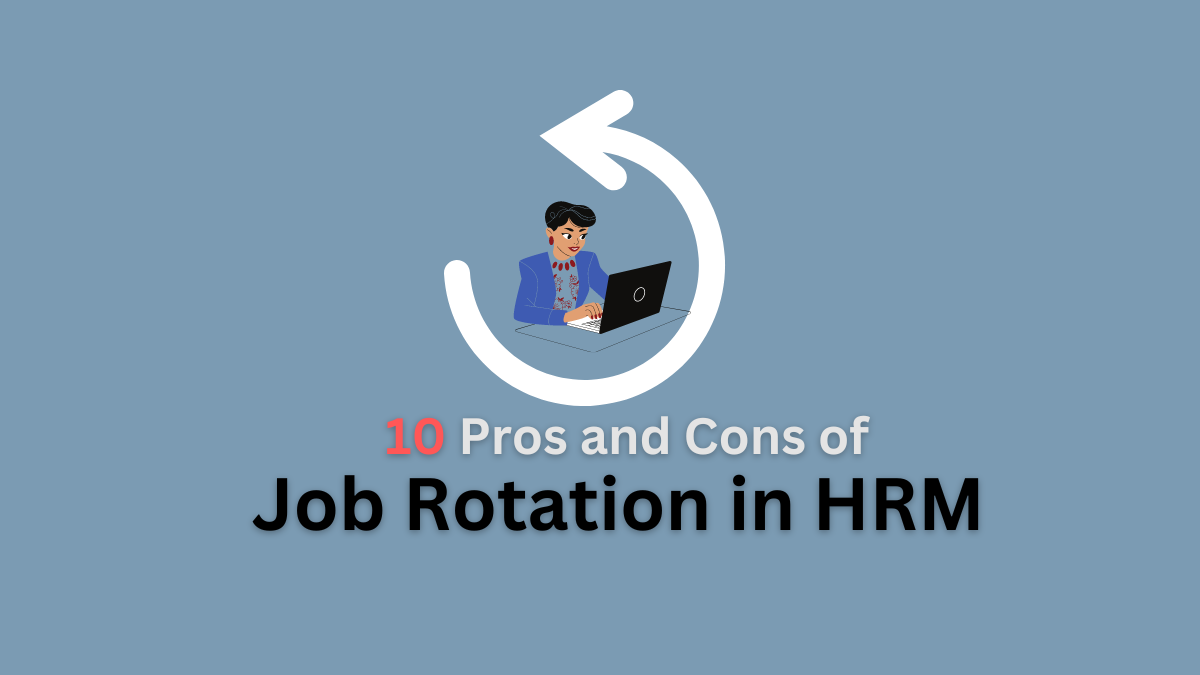Pros and Cons of Job Rotation
Job rotation is a strategic HR practice where employees periodically move between different roles or departments within a company. This approach aims to enhance skill diversity, mitigate monotony, and foster professional development without necessarily promoting employees.
Here we will discuss about 10 major pros and cons of job rotation in the workplace, so let’s get started:
Pros of Job Rotation
Below are the five main pros of job rotation in the workplace:
Skill Diversification and Development
Job rotation enables employees to gain diverse skills and experiences across different functions or departments. By exposing them to varied tasks and responsibilities, employees become more versatile and adaptable. This diversification not only enriches their skill set but also prepares them for future challenges and leadership roles within the organization.
For instance, an IT specialist who rotates through customer support, project management, and quality assurance roles gains a broader understanding of the business and enhances their problem-solving abilities.
Employee Engagement and Motivation
Monotony and routine can lead to disengagement and decreased motivation among employees. Job rotation injects variety and challenge into their work, keeping them stimulated and interested.
Employees appreciate opportunities to learn new skills and tackle different roles, which can increase their overall job satisfaction. Engaged employees are more likely to be productive, innovative, and committed to the organization’s goals.
Talent Retention and Development
Implementing a job rotation program signals to employees that the organization is invested in their growth and development. This can improve retention rates as employees see a clear path for advancement within the company.
By nurturing internal talent and providing opportunities for career progression, organizations reduce turnover and the associated costs of hiring and training new employees.
Knowledge Transfer and Collaboration
Job rotation facilitates cross-functional collaboration and knowledge sharing. When employees move between departments or roles, they bring diverse perspectives and insights, which can lead to improved teamwork and innovation.
Knowledge transfer occurs organically as employees learn from different teams and apply their learning to solve complex problems or improve processes.
Read More: 10 Major Pros and Cons of Participative Management
Succession Planning and Organizational Resilience
Job rotation helps organizations identify and groom future leaders. By exposing employees to various functions and responsibilities, companies can assess their potential and readiness for higher-level roles.
This proactive approach to succession planning ensures a pipeline of skilled and experienced individuals who can step into key positions when needed, thereby enhancing organizational resilience.
Cons of Job Rotation
Below are a few disadvantages of job rotation to mention:
Initial Decrease in Productivity
When employees transition to new roles, there is often a learning curve that can temporarily impact their productivity.
They may take time to familiarize themselves with new tasks, processes, and team dynamics, which can lead to a dip in performance. This initial adjustment period needs to be managed carefully to minimize disruptions to workflow and project timelines.
Read More: 10 Major Pros and Cons of Planning
Lack of Specialization
Continuous rotation between roles may prevent employees from developing deep expertise in a specific area. While they gain broad skills, they may not achieve mastery in any particular domain, which could affect the quality and efficiency of their work. Specialized roles requiring in-depth knowledge or technical skills may suffer if employees are frequently rotated.
Resistance and Discomfort
Not all employees may be comfortable with job rotation. Some may resist change or feel anxious about stepping into unfamiliar roles.
This resistance can lead to decreased morale, job dissatisfaction, and potentially higher turnover if employees perceive rotation as disruptive or undesirable to their career goals.
Read More: 10 Major Pros and Cons of SWOT Analysis
Inconsistencies in Performance
Employees may excel in certain roles while struggling in others. Job rotation can highlight these performance discrepancies, making it challenging for managers to assess and compare employee contributions objectively.
This inconsistency can impact team dynamics and morale, particularly if it leads to perceived favoritism or unfair evaluation practices.
Resource Intensiveness
Implementing and managing a job rotation program requires significant resources, including time, effort, and financial investment. Training employees for new roles, coordinating transitions, and monitoring performance across different departments demand robust HR and managerial support. Small or resource-constrained organizations may find it challenging to sustain a comprehensive rotation program effectively.
Hence, the above listed are the 10 main pros and cons of job rotation in the workplace.
